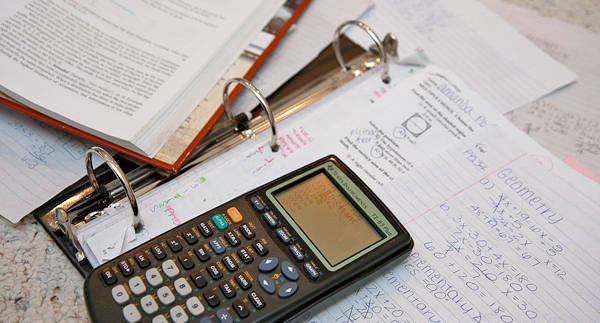Physics is an extremely fascinating branch of science. Most scientific breakthroughs have been a direct result of research in physics and mathematics. Laws are formulated after experimentation and observation. Theories are continuously proven and disproven based on logical reasoning and contemplation. Physics is an ever-evolving subject, just like the world around us. To be able to learn it, one must first attempt to understand the intricacies of the universe.
In technical terms, physics is regarded as the science in which matter and energy are discussed. Class 12 Physics is the backbone of most national exams like KVPY, Olympiads, JEE, NEET, NSE, and so on. For students, being good in physics is of utmost importance to crack these exams. Here, we shall discuss some ways in which class 12 CBSE Physics preparation can be made easy. As long as you formulate a clear plan for studying this subject, you won’t face much difficulty in understanding it.
Class 12 CBSE Physics Syllabus
The NCERT has formulated a detailed syllabus for class 12 Physics. It consists of 9 units and 14 chapters in total that form your perception of Physics.
Unit– I: Electrostatics – Here, topics like charge and its conservation, Coulomb’s law-force between two point charges, forces between multiple charges, the renowned superposition principle and continuous charge distribution are all dealt with. The initial part of this unit helps build the base for the next subsequent units that are part of the CBSE curriculum. Conduction and insulation are taught alongside capacitance and dielectric polarization. Numericals set from here expect you to remember basic values like the charge on an electron, the mass of a proton, etc. The chapters that are part of this unit are:
- Chapter–1: Electric Charges and Fields
- Chapter–2: Electrostatic Potential and Capacitance
Unit – II: Current Electricity – This unit comprises a single chapter on Current Electricity. Ohm’s law is cited in great detail. Carbon resistors and their colour coding is a patent question seen in almost every question paper. In addition to this, electrical energy and power are also taught alongside resistance and potential difference.
- Chapter–3: Current Electricity
Unit III: Magnetic Effects of Current and Magnetism – Electromagnetism starts with chapter 4. The concept of a magnetic field is discussed using Oersted’s experiment and the Biot – Savart law. Ampere’s law’s applications are limited to infinitely long straight wires. Force on a current-carrying conductor in a uniform magnetic field and the forces between two parallel current-carrying conductors are also calculated.
- Chapter – 4: Moving Charges and Magnetism
- Chapter – 5: Magnetism and Matter
Unit IV: Electromagnetic Induction and Alternating Currents – This can be a particularly challenging unit for students. This is because they are introduced to completely new concepts that they were not familiar with earlier. Faraday’s laws and their derivation are important. Moreover, power factors and the peak and RMS value of alternating current are also calculated.
- Chapter – 6: Electromagnetic Induction
- Chapter – 7: Alternating Current
Unit V: Electromagnetic Waves – An introduction to the electromagnetic spectrum is given along with their corresponding frequencies and wavelengths. A basic idea of displacement current is also provided.
- Chapter – 8: Electromagnetic Waves
Unit VI: Optics – Maximum questions are set from this portion of the syllabus. Its importance cannot be stressed enough. From ray diagrams to the working of a telescope, everything is taught under the aegis of this unit. A plethora of short and long questions are asked on Young’s double-slit experiment and Huygens principle. The derivation of the lensmaker’s formula is also a typical long question that is commonly asked.
- Chapter – 9: Ray Optics and Optical Instruments
- Chapter – 10: Wave Optics
Unit VII: Dual Nature of Radiation and Matter – The dual nature of radiation and matter waves are a recapitulation of class 11. Einstein’s photoelectric equation of the particle nature of light ought to be studied in depth. The Davisson-Germer experiment is not considered to be of much significance but should still be read once.
- Chapter–11: Dual Nature of Radiation and Matter
Unit VIII: Atoms and Nuclei – The chapters in this unit are directly linked to the initial chapters of class 11 Chemistry. Not much effort is required to study this unit as the information provided is quite simple to comprehend.
- Chapter–12: Atoms
- Chapter–13: Nuclei
Unit IX: Electronic Devices – Here, energy bands in metals, nonmetals and metalloids are talked about and discussed. Moreover, diodes are also explained in great detail.
- Chapter–14: Semiconductor Electronics: Materials, Devices and Simple Circuits
Ways To Make Your Class 12 Physics Preparation Easy
- Do not buy too many reference books– NCERT, along with a standard book like HC Verma or DC Pandey, should be sufficient for your exam preparation. There is no need to splurge on too many books that you will never get the time to read. Stick to your textbook and read it multiple times instead of reading multiple books once.
- Utilize online resources– Vedantu class 12 physics is a very good resource that is made available to students for free. On Vedantu’s online platform, you will find a repository of study materials that will aid you in your preparation. You can even enrol yourself in their test series or crash courses.
- Solve previous year papers – More often than not, questions in physics are repeated. If you pick up a previous year question paper and compare it with yours, you are bound to find similarities. Thus, one should always solve papers of at least the last 10 years to get a good grip on their preparation.
- Make notes – Studying Physics straight from the textbook can be quite tedious. Once you can figure out which sections of a chapter are important, you should get into the habit of making notes.





